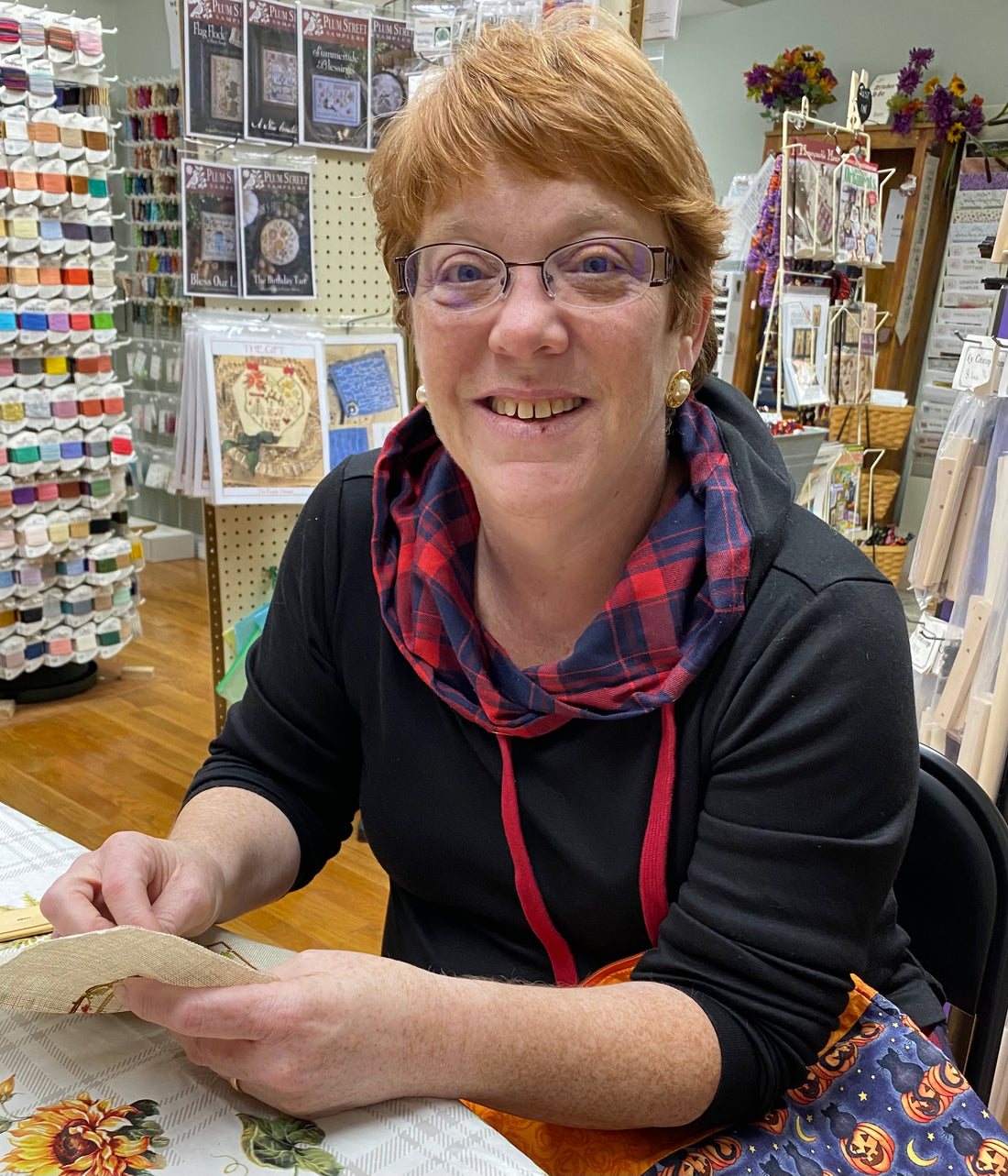
Let’s Talk About Cross Stitch Fabric- Part Two: Evenweave.
Share
In my last post we discussed Aida cloth and its properties. Today we are turning our attention to Evenweaves.
Evenweave fabrics have the same number of vertical and horizontal threads throughout the fabric. The fabric count can come in anywhere from 11 (stitches per inch) to counts of 32 and higher. Remember, the higher the thread count, the closer the weave (and the smaller the holes!).
This is a 25 count Lugana (evenweave)

Evenweave fabrics are made up of natural (and sometimes synthetic) fibers. It falls between the stiffness of Aida cloth (learn more about Aida in the previous post) and the softness and drapability of linen, As mentioned above, thread counts come in a variety of sizes, most common being 25,28, 30 and 32 count, Two of the most common evenweaves are Lugana - typically a 28 count and Morano at 32 count, Evenweaves are lovely to stitch on and can be your stepping stone between Aida and linen.
This is a 32 count Linen

Linen fabrics are evenly woven and made up of flax. It is the softest of the fabrics used for cross stitch. Because linen is 100% natural (flax) it can contain slight inconsistencies. It is not uncommon to run into areas where some threads are thinner than others, and linen can also contain what are called Slubs- a lump or thick place in a thread that causes and uneven texture in the linen. It shows as a knot or thicker raised thread(s) on the linen’s surface. Because linen comes in higher counts (40, 46, and into the low to mid 50’s), per inch, it is prized for its ability to allow for more intricate work such as (reproduction) samplers.
Some examples of linens on the market are Hardanger (22 ct.), Belfast (32ct.) or Edinburgh (36ct.). Today’s market also showcases many hand-dyed linens in not only neutral tones, but in an array of beautifully colored fabrics- with or without mottling (graduating shades of color throughout the fabric). One thing of note: the process of the fabric dying tightens the weave-of the linen so the actual count of your fabric may be slightly higher than listed.
Again, if you have any questions on fabrics, please leave a comment below. My next post will discuss needle sizes and how to choose the right needle for your project. Until then, happy stitching!
1 comment
Thank you for the info on linen, I have worked on linen before,and 1 x would be bigger than the others,and I would not know why, guess you have to check the material once or twice over. Will be calling today for the planner for the cross stitchers soul planner. I also have not bought linen in awhile. Thank you for the information again. Have a good day